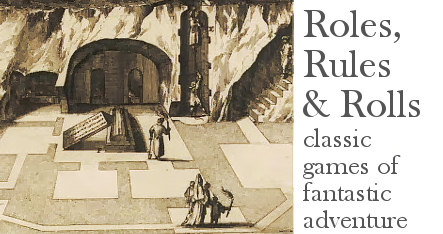How many movies owe their existence to fevered high-concept pitches like:
"It's like Dracula, but with a soul brother!"
"Like Jaws, but with a squid!"
"Like Deliverance, but with mutants!"
This suggests a technique I find myself using more and more, to rescue adventure locations from the same old, dull, "ogres and gray oozes and rust monsters" dungeon crew. The critters do the same things as the classic monsters, even with the same stats, but the look and feel is different - which may change the special abilities as well.
I'm doing this right now in my party's current dungeon, but I can't spoil the exact details. So here are a few examples, rolled up on the spot using my dungeon encounter table (to the right). You can take the first monster or the most distinctive one as the basis for the theme.
THEME: SKELETAL ANIMALS
Original rolls: Necrophidius, giant rats, kenku, minor devil
Now: Skeletal rats, necrophidius as is, bony bird-men, lesser bone devil.
THEME: BRAINS 'N TENTACLES
Original rolls: Grell, ogres, winter wolf, giant lizards
Now: Grell, brain ogres with extra pair of tentacles (2 weapon attacks), cryo-psychic brain hound with ice attack, lizards who move on 4 snake bodies (tentacles).
THEME: WIZARD'S LAB MONSTERS
Original rolls: Homunculus, purple worm, bat swarm, giant spider
Now: Homunculus; summoning circle that "slinkies" out into a purple-worm-like monster if disturbed; book that, if opened, creates a stream of origami bats from its pages (beware paper cuts); formerly itsy bitsy spider that wandered into an enlargement ray.
* I hereby motion to replace all uses of the term "dire" in Wizards D&D with "X-treme"
The 3 Mile Hex - The Natural Unit for Exploration
18 hours ago















